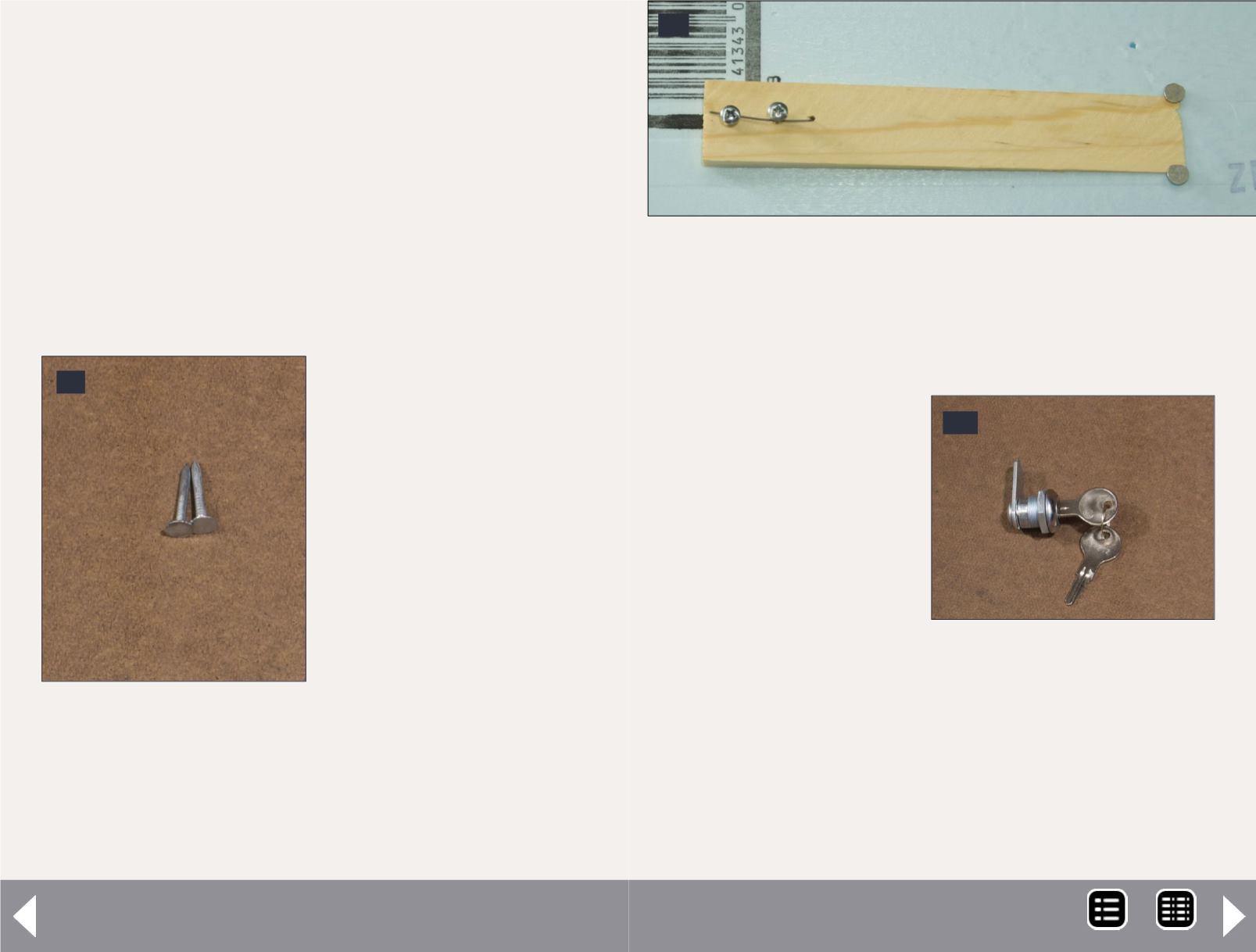
Working the Line
Let’s follow along with the
crew of Iowa Interstate
Train DMSW-12, locally
known as the “Tramp”, as
they work the Grimes Line
and see how they interact
with the locks along the
way. Today’s lineup calls for
the train to work Beisser
Lumber in Grimes, Iowa at
the north end of the line.
Since Beisser is a facing-
point spur, the crew will
have to runaround their
train at Urbandale to place
the cars in the proper
position. Arriving at the
make it functional. Train crews use an uncoupling pick to flip
it open when they need to spot or pull cars during op ses-
sions. Similar to the fence gate method, I set up a wire to
extend up next to the derail, preventing it from being fully
opened. Crews must unlock the derail to allow it to open, just
as on the prototype.
To help orient my operators on which lock controls what, I
added some inexpensive engraved signs above each lock. The
signs feature the spur or industry name, along with its milepost
location. It’s a simple but elegant way to identify each turnout
and lock while showing crews where they are on the layout. It’s
a good idea to label the locks in areas with large amounts of
switches, such as large indus-
tries or a yard, so that your
operators don’t lock or unlock
the wrong device.
When a turnout is no longer
in use, a railroad will usu-
ally spike and tag the switch
to prevent train crews from
operating the turnout. A new
lock will be added to the
switch stand with a tag or sign
indicating that it is out of ser-
vice. I modeled a spiked and
tagged turnout by having the
lock disconnected from the
switch and the throwbar per-
manently secured with piano
wire. I also added a styrene
tag based on the prototype
one behind the lock to show
my operators that the turnout
is not to be used.
Locking up your layout - 9
16
16: Roofing nails, with
their short lengths and
wide heads, make great
hinges for the shim wire
setup when using foam
sub-roadbed.
17
17: Make sure the shim wire is installed
perpendicular to the roadbed to prevent it from
binding. Placing the roofing nails on the sides
instead of the ends allows for more flexible
movement of the shim.
18
18: James used cabinet
cam locks to press
the shim and wire up
against the sub-roadbed.
He preferred the cam
locks because their
flush mounting kept his
fascia clean and clear, as
compared to padlocks.
MRH-Dec 2013


